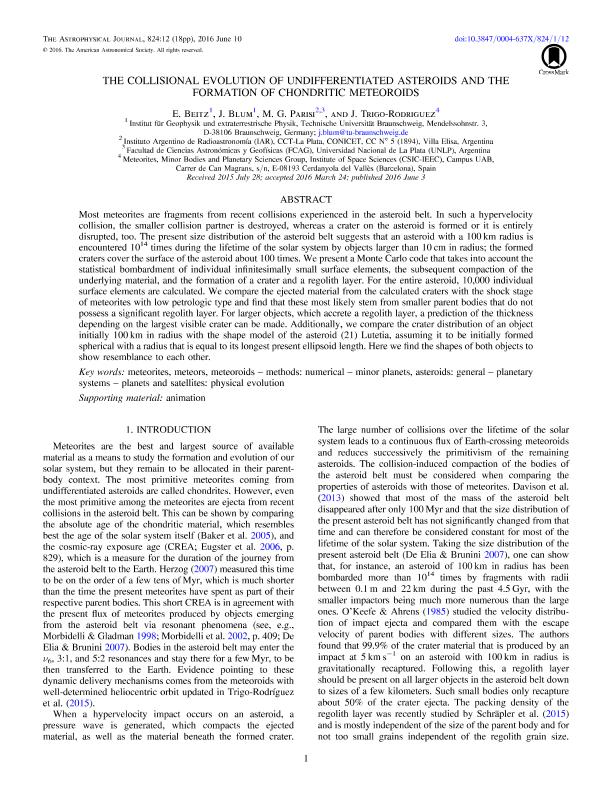Artículo
The collisional evolution of undifferentiated asteroids and the formation of chondritic meteoroids
Fecha de publicación:
06/2016
Editorial:
IOP Publishing
Revista:
Astrophysical Journal
ISSN:
0004-637X
Idioma:
Inglés
Tipo de recurso:
Artículo publicado
Clasificación temática:
Resumen
Most meteorites are fragments from recent collisions experienced in theasteroid belt. In such a hypervelocity collision, the smaller collisionpartner is destroyed, whereas a crater on the asteroid is formed or itis entirely disrupted, too. The present size distribution of theasteroid belt suggests that an asteroid with a 100 km radius isencountered 10<sup>14</sup> times during the lifetime of the solarsystem by objects larger than 10 cm in radius; the formed craters coverthe surface of the asteroid about 100 times. We present a Monte Carlocode that takes into account the statistical bombardment of individualinfinitesimally small surface elements, the subsequent compaction of theunderlying material, and the formation of a crater and a regolith layer.For the entire asteroid, 10,000 individual surface elements arecalculated. We compare the ejected material from the calculated craterswith the shock stage of meteorites with low petrologic type and findthat these most likely stem from smaller parent bodies that do notpossess a significant regolith layer. For larger objects, which accretea regolith layer, a prediction of the thickness depending on the largestvisible crater can be made. Additionally, we compare the craterdistribution of an object initially 100 km in radius with the shapemodel of the asteroid (21) Lutetia, assuming it to be initially formedspherical with a radius that is equal to its longest present ellipsoidlength. Here we find the shapes of both objects to show resemblance toeach other.
Palabras clave:
Meteorites
,
Meteors
,
Meteoroids
,
Asteroids
Archivos asociados
Licencia
Identificadores
Colecciones
Articulos(IAR)
Articulos de INST.ARG.DE RADIOASTRONOMIA (I)
Articulos de INST.ARG.DE RADIOASTRONOMIA (I)
Citación
Beitz, E.; Blum, J.; Parisi, Mirta Gabriela; Trigo Rodriguez, E.; The collisional evolution of undifferentiated asteroids and the formation of chondritic meteoroids; IOP Publishing; Astrophysical Journal; 824; 1; 6-2016; 1-18
Compartir
Altmétricas




